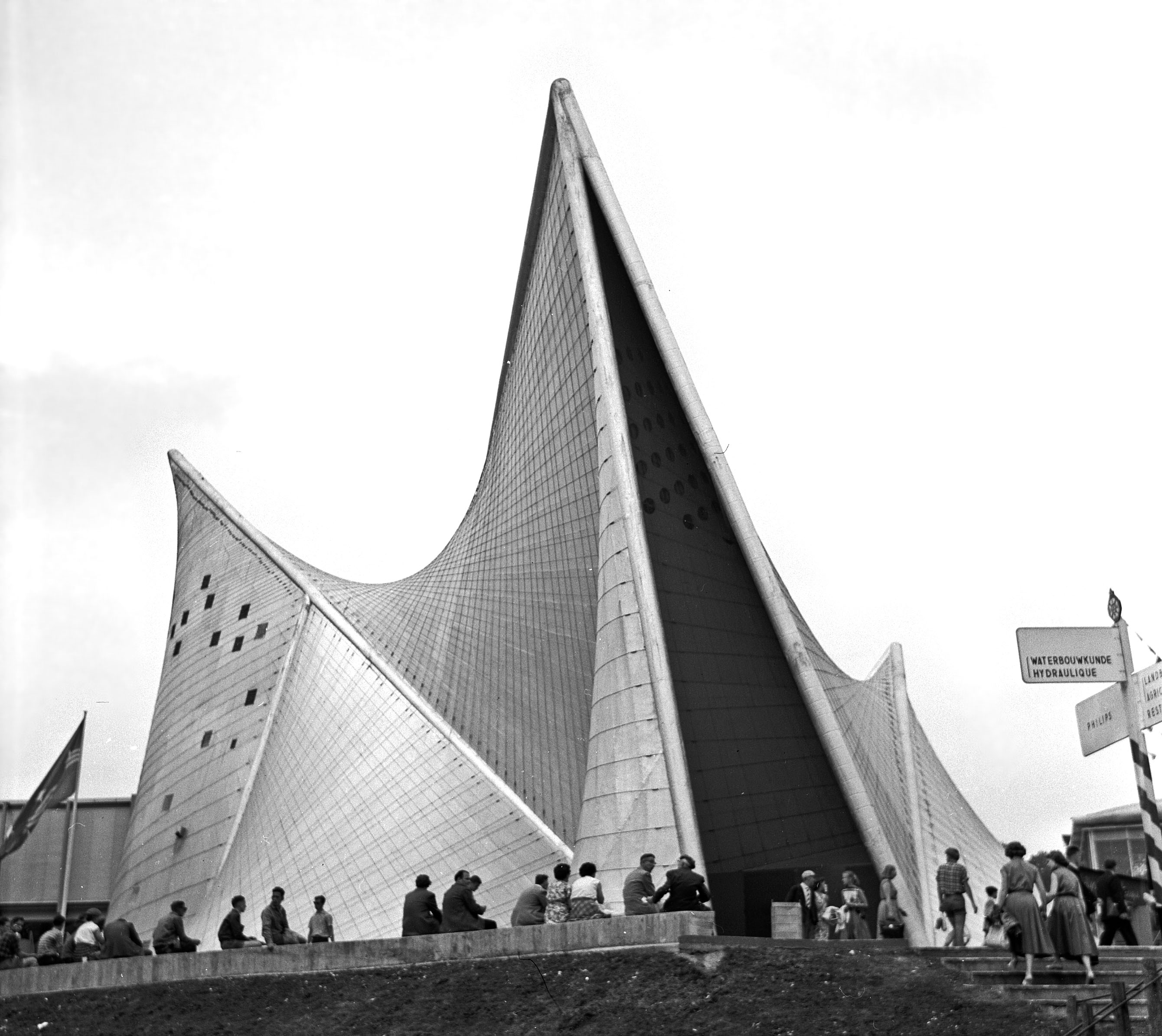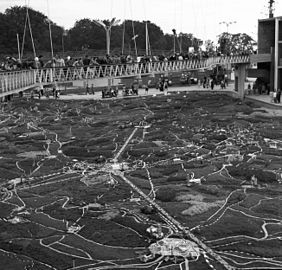
Expo 58
Expo 58, also known as the 1958 Brussels World's Fair (French: Exposition Universelle et Internationale de Bruxelles de 1958, Dutch: Brusselse Wereldtentoonstelling van 1958), was a world's fair held on the Heysel/Heizel Plateau in Brussels, Belgium, from 17 April to 19 October 1958.[1] It was the first major world's fair registered under the Bureau International des Expositions (BIE) after World War II.
1958 Brussels
Universal exposition
First category General Exposition
Expo 58
2 km2 (490 acres)
41,454,412
44
Belgium
7 May 1948
November 1953
17 April 1958
19 October 1958
Background[edit]
Expo 58 was the eleventh world's fair hosted by Belgium, and the fifth in Brussels, following the fairs in 1888, 1897, 1910 and 1935. In 1953, Belgium won the bid for the next world's fair, winning out over other European capitals such as Paris and London.
Nearly 15,000 workers spent three years building the 2 km2 (490 acres) site on the Heysel/Heizel Plateau, 7 kilometres (4.3 mi) north-west of central Brussels. Many of the buildings were re-used from the 1935 World's Fair, which had been held on the same site.[2]
The theme of Expo 58 was "Bilan du monde, pour un monde plus humain" (in English: "Evaluation of the world for a more humane world"), a motto inspired by faith in technical and scientific progress, as well as post-war debates over the ethical use of atomic power.[3]
The exhibition attracted some 41.5 million visitors, making Expo 58 the second largest World's Fair after the 1900 Exposition Universelle et Internationale de Paris, which had attracted 48 million visitors.[3] Every 25 years starting in 1855, Belgium had staged large national events to celebrate its national independence following the Belgian Revolution of 1830. However, the Belgian Government under Prime Minister Achille Van Acker decided to forego celebrations in 1955 to have additional funding for the 1958 Expo.[4] Since Expo 58, Belgium has not organised any more world's fairs.
National pavilions[edit]
Austria[edit]
The Austrian pavilion was designed by Austrian architect Karl Schwanzer in modernist style. It was later transferred to Vienna to host the museum of the 20th century. In 2011 it was reopened under the new name 21er Haus. It included a model Austrian Kindergarten, which doubled as a day care facility for the employees, the Vienna Philharmonic playing behind glass, and a model nuclear fusion reactor that fired every 5 minutes.



